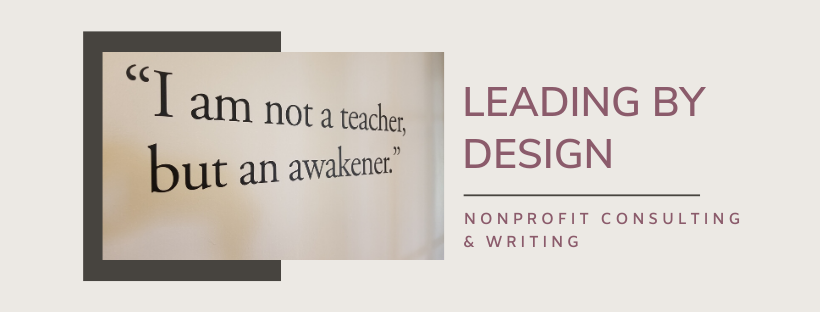JANUARY IS JUST AROUND THE CORNER (yikes!) and many if not most nonprofits will be holding their first board meeting of the new year sometime in the next four weeks. While we might be inclined to fall back on comfortable agenda formats and conversations for this meeting, if you're embracing 2014 as a year of intentional organizational development (see my post about that here), then I know you're giving serious thought to rethinking what and how business will be discussed.
For those of you from organizations that tend to tick methodically through task lists at board meetings before calling it a day, structuring the first board meeting of the new year around an evaluation of past successes and failures coupled with discussion about future directions is in order as one way to move from microscopic dissection to big picture strategy. For this type of conversation to be successful, it needs to be structured. One way to do that is with a handful of big questions and some supporting information. If you want to talk about why admissions, ticket sales, or event attendance was up or down, provide some contextual data that can help trustees understand trends and evaluate possible organizational responses.
Example: instead of focusing solely on money raised or lost, what if the big question was about the demographics of who supported and how the demographic could be expanded or shifted for the future?
If you've got a written, goal-based and mission-driven plan (and hopefully you do), that's your starting point for both assessment of the past year and future work. Make review of the plan a chunk of the agenda and make sure that all other agenda items connect to the plan. What a great way to get the new year off and running!
Bringing new board members on for their first meeting in January? For my money, there's probably no better opening conversation than a round robin discussion about why each of you cares about the organization and wants to be a part of it. Even the newbies should be able to articulate why they agreed to join the board. It's not only a good icebreaker, it's also a team-builder.



Comments